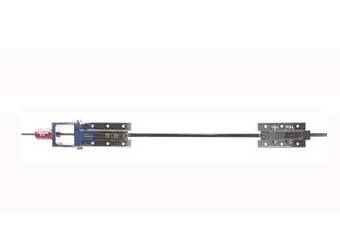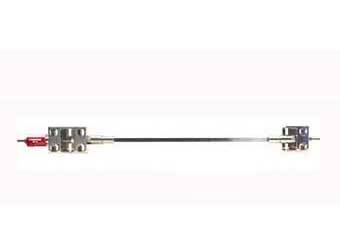Solutions
Horse Construction offers full range of structural strengthening materials with technical supports, documentation supports, products supports, project supports.
Bridge Reinforcement - Prestressed Reinforcement Method
1.1 Features and applicable conditions
1.1.1 Characteristics of prestressed reinforcement methods
(1) The construction process is simple, the traffic disturbance is small, the required equipment is simple, the labor input is small, the construction period is short, and the economic benefits are obvious.
(2) The bearing capacity of the bridge can be greatly improved or restored.
(3) The damage to the original structure is small, and it can be achieved without affecting the clearance under the bridge and without increasing the road elevation.
(4) Prestressed reinforcement requires reliable anti-corrosion design.
1.1.2 Applicable conditions of prestressed reinforcement method
(1) It is suitable for cases where the bending bearing capacity of the normal section is insufficient or the steel bars in the tensile area of the normal section are corroded.
(2) Applicable to the situation where the beam deflection exceeds the specification due to insufficient bending stiffness of the beam or the crack width in the tensile zone of the beam exceeds the specification due to too small stiffness.
(3) It is suitable for the case where the shear bearing capacity of the inclined section of the beam is insufficient.
1.2 Additional Impact
(1) The prestressed reinforcement method actually changes the original stress system of the beam body. After the structure is reinforced, the mechanical behavior of the new stress system under load is different from the original structure. After the prestressed reinforcement is completed, due to the effect of prestressing, the original stressed structure will be unloaded to different degrees, resulting in the redistribution of the internal force of the original structure.
(2) Due to the huge concentrated force in the prestressed tendon diverting block and the anchoring point, the force in this area is relatively complicated.
(3) Since the prestressed tendons are arranged outside the beam section when prestressing the girder bridge, it is easily affected by the environment (such as temperature, acid gas, etc.).
1.3 Mechanical characteristics
The prestressed reinforcement method actually makes the reinforced structure a statically indeterminate structure with flexible tie rods. The difference from other prestressed structures or other reinforcement methods is as follows. The load on the bridge before reinforcement consists of dead load and live load. The tension control value of the prestressed tendon is read under the dead load of the superstructure, that is, the reinforcement with load. Therefore, when calculating the stress increment under the prestressed tendon load, only the effect of the live load should be considered. According to the above stress characteristics, the prestressed reinforced beam bridge structure can be divided into two stages of applying prestress and live load for stress analysis.
1.4 Construction process
1.4.1 Detection of the original beam reinforcement position
During the construction of external cable reinforcement, it is necessary to accurately set out the positions of the upper anchor point, the sliding block backing plate and the fixed support of the prestressed steel bar in the middle of the span. Since there are steel bars in the top plate and web of the beam, especially the stressed steel bars, it is generally necessary to adjust appropriately to avoid these steel bars. After the position adjustment, the system should be re-checked.
1.4.2 Reinforcement materials and construction site preparation
The external prestressing tendons are processed, the anchoring equipment and the mechanical equipment for applying prestressing are prepared. It is necessary to set beams at the anchoring end to anchor the external prestressed tendons, prepare high-strength adhesives for pasting the anchoring and supporting steel backing plates, set anchoring points, and drill holes for anchor bolts.
1.4.3 Construction of sliding block and backing plate
According to the position of the set-out steering block, chisel the concrete of the steering block by about 2cm, apply epoxy glue and then use epoxy mortar to level it, and paste the support plate on the steering point. The steering block needs to be set with anchor bolts to ensure safety.
1.5 Comments
The prestressing reinforcement method is an active reinforcement method, which can greatly improve the bearing capacity of the components, and the construction is simple and convenient. It should be given priority in the selection process of reinforcement methods.
You can find anything here you are in need of, have a trust trying on these products, you will find the big difference after that.

Prestressed carbon fiber reinforced polymer(CFRP) plate for slab, beam strengthening to increase stiffness, reduce distortion and deflection of members, reduce the cracks, avoid and stop cracking.

Prestressed carbon fiber reinforced polymer(CFRP) strip for slab, beam strengthening to increase stiffness, reduce distortion and deflection of members, reduce the cracks, avoid and stop cracking.

Prestressed carbon fiber reinforced polymer(CFRP) laminate for slab, beam strengthening to increase stiffness, reduce distortion and deflection of members, reduce the cracks, avoid and stop cracking.